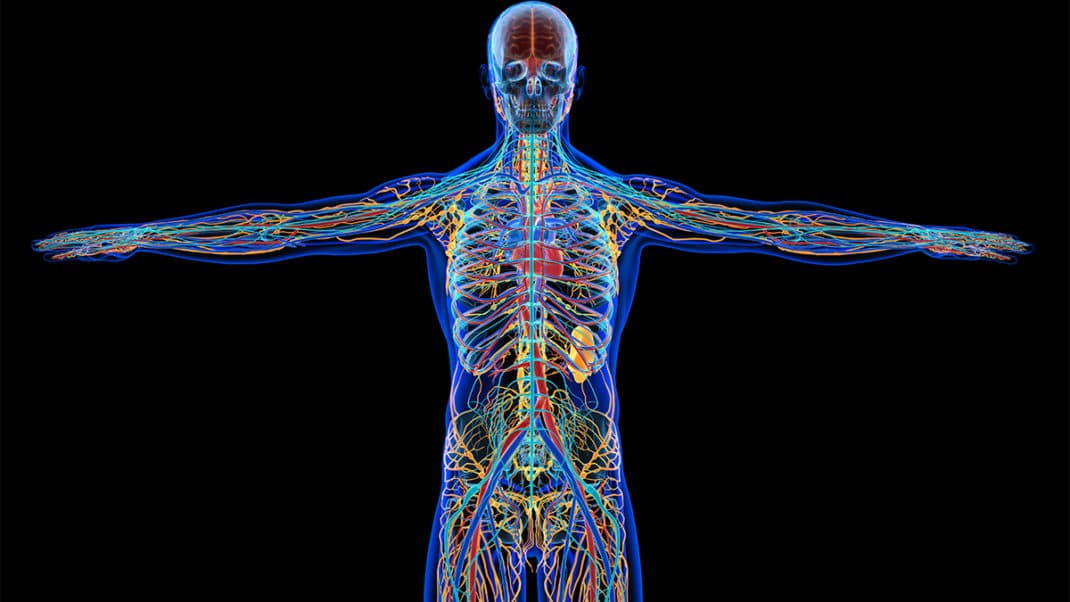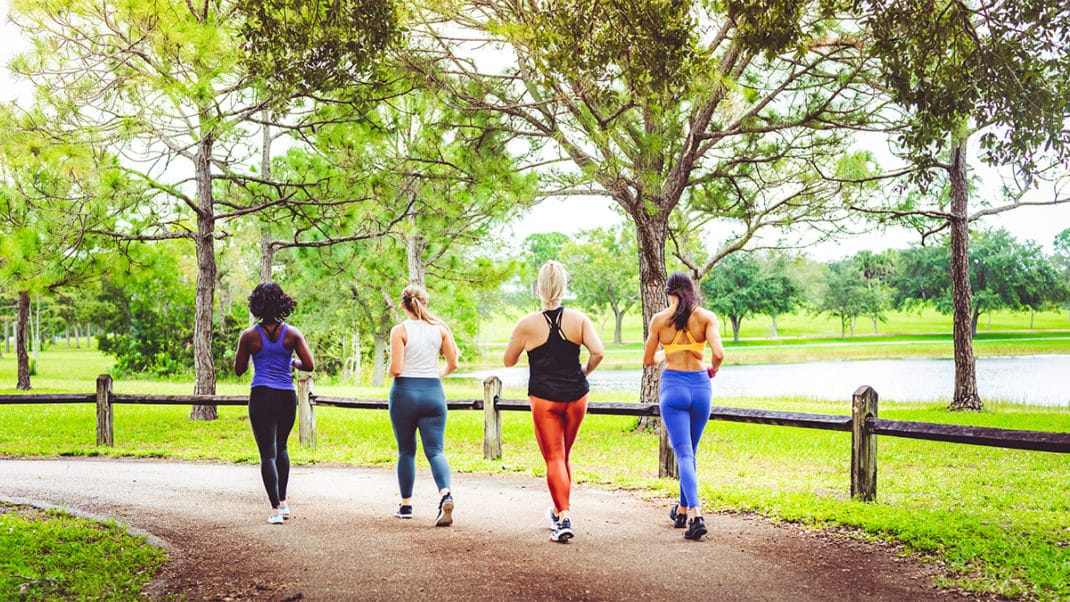A Practical Approach to Program Design
Follow along with this case study to put your "book knowledge" into practice
Your “Real-Life” Client
Kevin is a 46-year-old male computer technician who, on the advice of his doctor, has come to your facility for an updated exercise program. His health history questionnaire reveals that his father died of a heart attack at 53 years old. In addition, Kevin smoked until 2 years ago. His statistics are as follows:
- total cholesterol = 220 milligrams per deciliter (mg/dl); LDL = 135 mg/dl; HDL = 36 mg/dl
- fasting glucose = 88 mg/dl
- height = 6 feet 2 inches
- weight = 225 pounds, or 102.3 kilograms (kg)
- body mass index (BMI) = 29
- resting heart rate = 59 beats per minute (bpm)
- resting blood pressure (confirmed by physician) = 144/90 millimeters of mercury (mm Hg)
- usual physical activity = low-intensity walking 3 days a week for 30 minutes a session
- VO2max (determined by a previous submaximal cardiorespiratory fitness test) = 38 milliliters per kilogram per minute (ml/kg/min)
Kevin is taking a vitamin supplement, as well as medication to help control his blood pressure. His favorite activities are walking, basketball and swimming.
The following 6 steps will allow you to design an appropriate cardiorespiratory exercise program for Kevin.
Step 1: Pre-Exercise Screening
Kevin has three positive coronary artery risk factors (hypertension, high cholesterol and positive family history), but because of his age, he automatically falls into the moderate-risk category (ACSM 2000). He can start a moderate-intensity program (50%–70% VO2reserve [VO2R]) without physician clearance, but a physician would have to clear him before he could increase intensity. He should be referred to a dietitian for dietary strategies to improve his cholesterol.
Step 2: Goal Identification
Kevin’s goals are to improve his cardiorespiratory fitness by increasing his activity with light jogging and to lower his blood pressure enough to get off medication. According to ACSM guidelines (ACSM 2000), his VO2max indicates average cardiorespiratory fitness, so he does have room for improvement. His age- predicted HRmax (220 − 46) is 174 bpm.
A good caloric expenditure goal for Kevin would be 1,500 kilocalories a week (kcal/wk). (No client should go below 1,000 kcal/wk.)
Step 3: Determining Appropriate Intensity
Since Kevin already engages in some physical activity, it is fine to push him into the higher ranges of moderate-intensity exercise (60%–70% for VO2R and HRreserve [HRR]). A rating of perceived exertion (RPE) of 11–14 can also be used during exercise. Calculate Kevin’s VO2 range, and then convert the low-end and high-end values to kilocalories per minute (kcal/min) to determine the workload for walking/running or cycling.
VO2 Range. VO2R: [(VO2max − resting VO2) × % intensity] + resting VO2
First perform the calculation in parentheses, using the information about Kevin that you gathered during the pre-exercise screening. (Remember that resting VO2 is constant for everyone at 3.5 ml/kg/min.)
38 ml/kg/min − 3.5 ml/kg/min = 34.5 ml/kg/min
Multiply by 60% for the low end, and by 70% for the high end, and add 3.5:
Low end: (34.5 × 0.60) + 3.5 = 24.2 ml/kg/min
High end: (34.5 × 0.70) + 3.5 = 27.7 ml/kg/min
Kevin’s target VO2 range is 24.2–27.7 ml/kg/min.
Heart Rate Range. HRR (using Karvonen formula): [(HRmax − HRresting) × % intensity] + resting HR
Perform the calculation in parentheses:
174 bpm − 59 bpm = 115 bpm
Figure the low and high ends by multiplying by the appropriate percentage and adding 59:
Low end: (115 × 0.60) + 59 = 128 bpm
High end: (115 × 0.70) + 59 = 140 bpm
The target HR range is 128–140 bpm.
Speed. To calculate running speed on flat ground, use the ACSM metabolic equation for running and convert VO2 to speed:
VO2 = (0.2 × speed) + (0.9 × speed × grade) + 3.5
To calculate the low-end speed:
24.2 = (0.2 × speed) + (0.9 × speed × 0%) + 3.5
When you multiply by zero (as in the second part of the equation), you get zero, so this part of the formula cancels out:
24.2 = (0.2 × speed) + 3.5
Subtract 3.5 from both sides:
20.7 = (0.2 × speed)
Divide each side by 0.2:
Low-end speed = 103.5 meters per minute (m/min)
Divide m/min by 26.8 to convert to miles per hour (mph):
Low-end speed = 3.9 mph (Round up to 4 mph for a brisk walk/slow jog.)
By substituting 27.7 for 24.2 in the previous formula, you can calculate the high-end speed: 121 m/min, or 4.5 mph (slow jog).
Kevin’s target speed range is 4–4.5 mph.
Kcal/Min. Now convert VO2 to kcal/min. Use the following steps to find the low end:
- Multiply 24.2 ml/kg/min by 102.3 kg (Kevin’s weight) to get VO2 in milliliters per minute (ml/min):
24.2 × 102.3 = 2,475.6 ml/min
- Divide ml/min by 1,000 to convert to liters per min (L/min):
2,475.6 ÷ 1,000 = 2.48 L/min.
- Multiply L/min by 5 kcal/L to get kcal/min:
2.48 × 5 = 12.4 kcal/min
Use these same steps with a VO2 of 27.7 to get the high-end kcal/min (14.2 kcal/min).
The target kcal/min range is 12.4–14.2.
Step 4: Determining Appropriate Frequency and Time
Since you have identified Kevin’s kcal/wk goal and calculated his kcal/min, you can base your frequency and time on these values.
Frequency. Kevin’s initial kcal/wk goal is 1,500. He should expend about 300 kcal/session at the least, and 500 kcal/session at the most. If you set 300 kcal/session as a beginning goal, Kevin will need to exercise 5 days a week (5 days × 300 kcal/session = 1,500 kcal/wk). Since he has already been exercising 3 days a week, he should be able to tolerate 5 days of moderate-intensity activity to reach the goal.
Time. Duration of exercise can be based on the kcal/min and kcal/session goal. You can calculate this time as a range using the kcal/min range:
Low-end time: 300 kcal/session ÷ 14.2 kcal/min = 21.1 min/session
High-end time: 300 kcal/session ÷ 12.4 kcal/min = 24.1 min/session
The target time range is 21–24 min/session to reach the kcal/session goal.
Since Kevin is already exercising 30 min/session 3 days a week, he may be able to reach the higher kcal/session goal of 350–400 kcal/session.
Step 5: Choosing the Type of Activity
It is a good idea to stick initially with Kevin’s favorite activities and adjust his program accordingly. However, it is also important to eventually expand his options to include other recreational activities—such as racquetball, tennis or other sports—to provide variety and ensure program adherence. For these activities, it is best for him to monitor HR and RPE to make sure he is maintaining an appropriate intensity.
Step 6: Progression and Review
Give Kevin an idea of how he should progress through his program from a frequency, intensity and time standpoint. General guidelines are (1) to increase intensity by about 5% when the upper ranges become easy to perform, and (2) to increase volume (frequency and time) by about 10% each week (ACSM 2000; Heyward 2002). Remember, intensity and volume share an inverse relationship: If you increase one, you should decrease the other. Changing just one FITT component at a time as the client progresses ensures adequate adaptation to the new change before you increase other areas.
Since Kevin is at a little higher risk than the “average” client, it would be wise to maintain this initial program until you are confident he is adapting properly. A quick referral and call to his physician would be needed before progressing further.
About 6 months into the program, Kevin should be re-evaluated using a submaximal cardiorespiratory fitness test, and he should return to his physician to get his blood pressure rechecked. Set a time to meet with Kevin to review his goals and change his program as needed.
Training by the Book
If you can follow and apply these steps in your practice, you should be able to design most any type of cardiorespiratory program for beginners. Remember, the most accurate way to determine exercise intensity and caloric expenditure requires the use of VO2, so base your program design upon the intensity you calculate using this factor. You can supplement this calculation with one of the HR methods and/or with subjective measures such as RPE or the talk test. When used in combination, these methods are far more effective for determining intensity than any one of them is when used alone. An appropriate progression plan will also be a useful guide for your clients and is a must for long-term planning.
. . . it is also important to eventually expand his options to include other recreational activities—such as racquetball, tennis or other sports—to provide variety and ensure program adherence.HRR (using Karvonen formula): [(HRmax − HRresting) x % intensity] + resting HR
Duration of exercise can be based on kcal/min and kcal/session goal.
References
Heyward, V. 2002. Advanced Fitness Assessment and Exercise Prescription (4th ed.). Champaign, IL: Human Kinetics.





